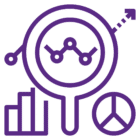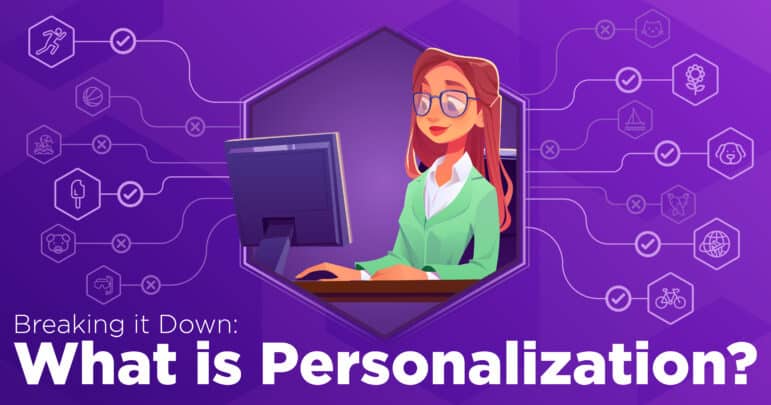I consistently hear “personalized” used to describe technical features, and it is not always clear what the term means. The term “personalized” often leads us to ask,
- How is the feature personalized, i.e. what factors lead to the outcome?
- At what level is the feature personalized, for a group or individual?
- What criteria can we use to measure the personalized results?
Personalization applies to content, learning materials, notifications, and several other features in everyday software. When implemented effectively, personalization improves user engagement, experience, and retention. In this blog, I will define personalization, discuss the goal and benefits of personalization, and provide a few examples of how to implement personalization successfully.
Defining Personalization
As Joe Hilger mentioned in his recent content personalization blog, “A common phrase in Knowledge Management is ‘Deliver people the right information at the right time!’.” Personalization can be defined by the shorter phrase, “deliver people the right information.” The right information is determined by adapting results based on the following:
 Rules: Changing what is shown based on known facts about the individual (i.e. their background, interests, or department in the organization, etc.).
Rules: Changing what is shown based on known facts about the individual (i.e. their background, interests, or department in the organization, etc.).
 Behavior: Identifying patterns and similarities between users to show likely results.
Behavior: Identifying patterns and similarities between users to show likely results.
 Predictions: Learning from rules and known behaviors to make best-guess predictions about an individual.
Predictions: Learning from rules and known behaviors to make best-guess predictions about an individual.
When marketers sell products, they have more success selling to consumers who can relate to their purchases. If a marketer intentionally connects their product with a consumer based on a profile of a consumer’s behavior, characteristics, and preferences, the consumer is more likely to purchase the product. Personalization leverages the wants, needs, and attributes of a consumer or end-user to provide relevant content, learning materials, or other digital touch-points like notifications. If content design utilizes end-user information to customize content for a particular user or group of users, they are more likely to engage with the content.
The Benefits of Personalization
As a result of the information age, the amount of content available to users increases exponentially daily. Finding key information in the vast knowledge space of an organization is more difficult each day. The steps we can take to curate the data that employees or consumers have to sift through before finding what they need are critical to reducing time spent searching and improving satisfaction with results.
According to McKinsey, a personalized experience increases employee engagement 20-30%, and SmarterHQ reinforces that with their finding that 72% of consumers say they only engage with personalized messaging. There are numerous benefits to using personalization including enhanced user experience, improved performance of daily tasks, and reduced time and clutter of information. The benefits of leveraging personalization vary depending on the use case, so let’s take a look at some examples of how to impactfully apply personalization.
Personalization Use Cases
A common use of personalization is in a learning ecosystem when developing a course (or learning path) for an individual learner. In this case, the learning materials and assignments presented to the learner can change based on the learner’s preferences, previously proven abilities, or other background information. Every learner grasps concepts differently, and the ability to adapt courses to optimize comprehension and retention of course material so learners can accurately utilize the information is key to meeting success criteria. An example of this is personalizing learner feedback based on how a learner reacted to an interactive prompt. If a learner answers a formative assessment question incorrectly, we may want to provide more specific resources or a plan to reinforce relevant material. Going beyond the course, learners may want to personalize their coursework timeline by configuring the timing and set up of microlearning assets and notifications to remind them to re-engage and strengthen lesson reinforcement.
“Delivering personalized digital experiences is another tool in your knowledge management toolbox – helping deliver the right information to the right people at the right time.” – Enterprise Knowledge (on building a personalization proof of concept)
Another emerging personalization trend in the knowledge management space is using personalized search results in company public or internal-facing search platforms. When a user enters a search query, search platforms can leverage more than just the query to produce the result. The system may also recognize the user’s
- department,
- geographic region,
- company or project role, and
- current projects.
By using all this information, we can boost search results produced by the same department, related to a region, or match objectives tied to the user’s current role and projects. The personalization approach and specifics of boosting should be workshopped, iterated on, and tested to optimize results, and tied into a taxonomy best describing the knowledge domain.
Conclusion
Personalization is an important aspect of improving the findability and discoverability of information. With successful application, personalization provides individuals access to relevant information that was previously buried or obscure. If you or your organization have questions about starting your personalization journey or have a topic of interest you would like us to cover next in our “Breaking it down” blog series, contact us.

